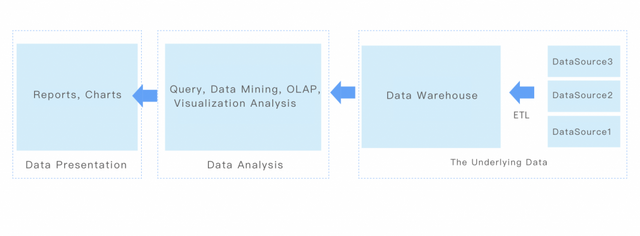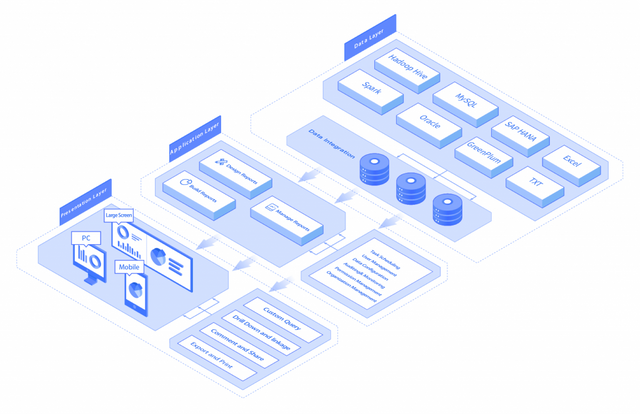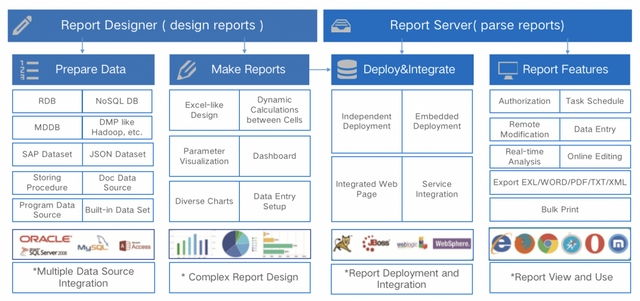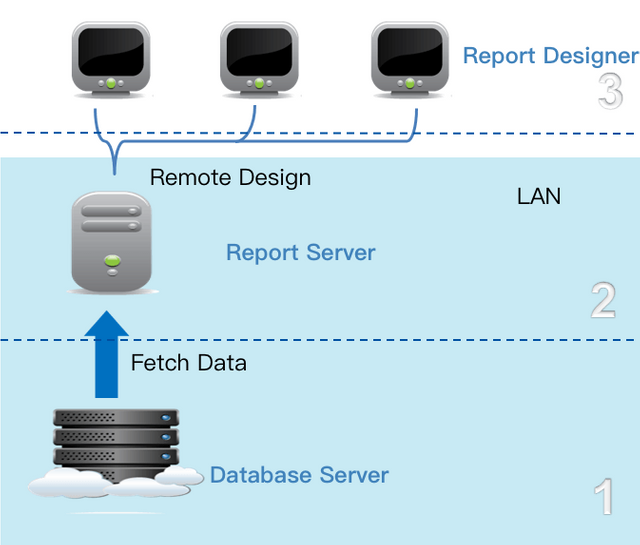Reporting System's Guide
What is the Reporting System?
The reporting system is a general term applied to a wide range of applications that extract data from databases, organize these data into reports, manage and distribute these reports to the decision-makers to help them make better-informed business choices.
A good reporting system should be convenient for report developers generating reports. And it is supposed to provide a report portal for managers to manage and distribute reports. Making operation and maintenance easy is also of great importance.
Software to Build Reporting System
There are two ways for enterprises to build reporting systems. One is using open source tools and code such as Python to develop systems. The other is to use commercial reporting tools, such as FineReport or Crystal Reports.
With the help of open-source tools, it is more efficient to develop reports than before using Excel. For open-source reporting tools, you can refer to this article:Top 10 Free and Open Source Reporting Tools in 2020
However, there is no service guarantee. When meeting technical difficulties or bugs, it will pose a threat to the stability of the system.
Using commercial reporting tools is common in enterprises to build reporting systems. It can save your time in developing reports and free you from the burden of operation and maintenance. For popular reporting tools on the market, you can refer to: Best Reporting Tools List in 2020 and How to Choose
How to Design Reporting System Architecture?
Based on the process from data to knowledge, a standard reporting system’s functional architecture is shown below.

It is composed of three functional parts: the underlying data, data analysis, and data presentation.
The underlying data is in charge of data management, covering data collection, ETL, building a data warehouse, etc.
The data analysis part is responsible for extracting data from the data warehouse, using the query, OLAP, data mining to analyze data, and forming the data conclusion with data visualization.
In the end, in the data presentation level, display data insights in the form of reports and visual charts.
Take FineReport as an example, which is a reporting software has adopted by 11000+ companies in building their reporting systems.
FineReport is developed using a three-tier architecture, connected to the data source through a relational database interface.

All business processing is done in the designer (the middle tier) and finally presented to the user through the parsing server.

The data layer of FineReport supports multiple data sources and data integration.
The application layer of FineReport is in charge of the main functions and business logic. You can design, generate, and manage reports in this part.
FineReport can display dynamic reports and dashboards on the PC, mobile, and TV screens in the presentation layer because the charts in FineReport are developed by HTML5, which can be used cross-platform.
For instance, when you generate a sales report with the sales data stored in the CRM, the presentation layers will send API calls to the data layer.
The data layer will run the query and return the outcomes in the form of a web page to the application layer.
Then, the application layer will send the page to the browser, where the presentation layer shows the reports on a laptop or other devices.
With this reporting system architecture, you only need to install the report designer. The project will be deployed to the server.
In this way, other users can directly access the report as long as there is a browser on the computer.

Besides, once the report requirements change, it is very convenient to design locally and then publish it to the remote server by switching the working directory or directly editing the report files on the remote server.
For companies, it only needs to deploy the project once, and then it can be designed directly and remotely, making migrating reports convenient and improving efficiency.
Original Source: https://www.finereport.com/en/reporting-tools/reporting-system.html